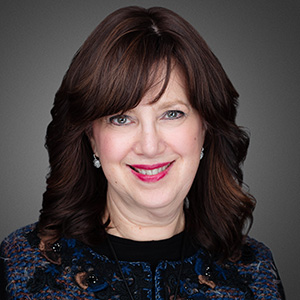My Way or the High Way


We know what we want — but do we know what He wants?
“I
don’t want my son to marry an out-of-towner. He needs someone more sophisticated.”
“I want to finish my BA by the end of the summer after seminary. That way I can be done with my speech degree by the time I’m 20, so I can marry a long-term learner, move to Israel, and support him.”
“I want to go to Lavish Estates in the summer even though it’s a real stretch financially. That place has the best day camp for my daughter.”
“I want my son to go to Brisk. It’s the best yeshivah for him.”
“I want my husband to be open to having Shabbos guests from the local kiruv program. He says he’s tired at the end of the week, but I think it’s good for him to expand his horizons.”
We all have a mental list of wants, and we tell ourselves we have good reasons for them.
As infants, our sole desire was to be warm and clean and fed. It took many years and much maturation for us to realize that we have to take other people’s needs into account, at least on the surface. This process of socialization allows us to get along in society, keep a job, and form friendships.
As we grow spiritually, we also learn to put aside what we want when it is clearly not what Hashem wants.
“I’m in the mood for a latte, but oh, I’m fleishig.”
“I want to take a hot bath, but it’s the week of Tishah B’Av.”
But generally, we have no issue growing our private list of wants, all the while comfortable that we are doing ratzon haBorei and that there is no conflict there.
Rock-Solid Belief
In order to have some idea of what Hashem wants from us, we need to really want to know Him. Moshe Rabbeinu, even after having been on Har Sinai 40 days and nights, says to Hashem, “Hareini na es kevodecha” (Shemos 33:22-23). He still wanted to know Hashem more deeply.
In response, Hashem tells Moshe to stand in a cleft in a rock, and He will pass by. In this mysterious encounter, we often focus on the end of the verse, where Hashem explains that Moshe will only be able to get a glimpse of Him after He has passed by, as that is all of the Shechinah a human is capable of experiencing while body and soul are still together.
Many times, we see things happen that are beyond our comprehension, yet when we see the “back” of a baffling incident — when we view it in retrospect — we see clearly that Hashem directed the events.
Yet I am struck by something else: the image of the cleft in the rock. There are many areas in life where we decide we want things a certain way. We’re convinced that’s what’s good for us and our family. But if we’re really concerned with Hashem’s desire, we need to leave open a crack in our rock-solid view of the world, we need to consider that maybe He wants something else for us or our child or our student or our community.
The following story is paraphrased from the introduction to the English edition of Mitzvas Habitachon by Rav Houminer:
A woman came to a rebbe, crying bitterly, begging him to daven for her son who was lying deathly ill in the hospital. After several moments of contemplation, the rebbe said to the mother, “I need to ask you a very difficult question. Compose yourself. What if I told you that I know for certain the Creator wants your son’s neshamah back next to Him? I need you to think about that.”
The woman just looked at him. The rebbe repeated the question, and added, “Would you accept His decree or would you fight it?”
The distraught mother sat for a few minutes with her eyes closed. Then she said, “If you can tell me with 100 percent certainty that the Creator of the Universe wants the neshamah of my son back next to His Heavenly throne, I will accept His decree.”
“Now we can begin to daven,” said the rebbe, and daven they did. Three days later the boy walked out of the hospital on his own two feet.
Facing the Truth
There are two sides to every set of circumstances. On one side is our desire, deep and profound. On the other side is the Will of the One Above, Who knows what’s ultimately good for us. When we want something, no matter how badly, we can pray that our side matches His, but we have to know and accept that His ratzon reigns supreme.
If this isn’t part of our consciousness, we’re leaving Hashem out of the picture. Even when we turn to Him with sincere tefillah, we’re only davening that He fulfill our will, without a thought that He may want something different. We’re using the vending-machine model of prayer, trying to push the right buttons to get what we want, without considering that there is another side: His side.
The Ramchal (Mesilas Yesharim, Ch.19) describes prayer as the realization that we’re standing before the Creator, nosei v’nosein imo, having a back-and-forth conversation with him. What is the back-and-forth? It is that we are speaking and He is listening to our side and paying attention to our words, as a man speaks to his friend.
Hashem listens to our side, but we must also pay attention to His. This requires us to take an honest look at ourselves and at our motivations for the things we want. When parents say they want their son to go to Brisk, is it about their child, or an attempt to stack the deck in their favor on a future shidduch résumé or the satisfaction that they succeeded with their son? Leaving Hashem in the picture means considering where the greatest kiddush Hashem will be made — in the yeshivah where their child will grow the most in his avodas Hashem, and will come to love learning His Torah. That yeshivah may be Brisk, but in some cases it be somewhere else.
Or, you want your child to marry an in-towner, and you list all the reasons an out-of-towner won’t be appropriate. Is this about your child and the tafkid that Hashem put him here for, or is it about not wanting to let go? Only much soul-searching can reveal the truth.
One of my daughters went to a different seminary than her older sisters. The school we chose was less typical, but with great teachers who were available to have personal relationships with the students. One day, I met a rebbetzin in the supermarket who challenged our decision. “Don’t you care about your daughter’s shidduchim?” she asked in all sincerity.
Of course, like every mother, I wanted my daughter to have the best shidduch prospects. But it was clear to me that my first obligation was to give her the opportunity to become the best she could be, a person who is capable of having a real relationship with Hashem. I understood that Hashem needed a prominent place in this decision. He was in charge of her shidduch. My job was to do right by my child, according to His desires.
How can we really know what’s driving our decisions? Rav Dessler teaches that Hashem gave an advantage to truth over falsehood, to reality over illusion, so that there would be enough truth for the world to continue to exist. If we want to find the truth within ourselves, we need only dig deeply and face ourselves honestly. Only then will the truth come into focus, and only then will we be able to challenge our list of things we-know-we-want-because-they-are-good-for-us, and know if we are serving our own will or Hashem’s.
From the crack in our steadfast wants, the light of His presence can penetrate.
We always have the choice of my way, or the High Way.
Originally featured in Family First, Issue 616. Debbie Greenblatt is a senior lecturer for the Gateways organization and a teacher of both observant and not-yet-observant Jewish women for over 30 years. Debbie’s lecture topics include Jewish texts, Jewish thought, and relationships.
Oops! We could not locate your form.





